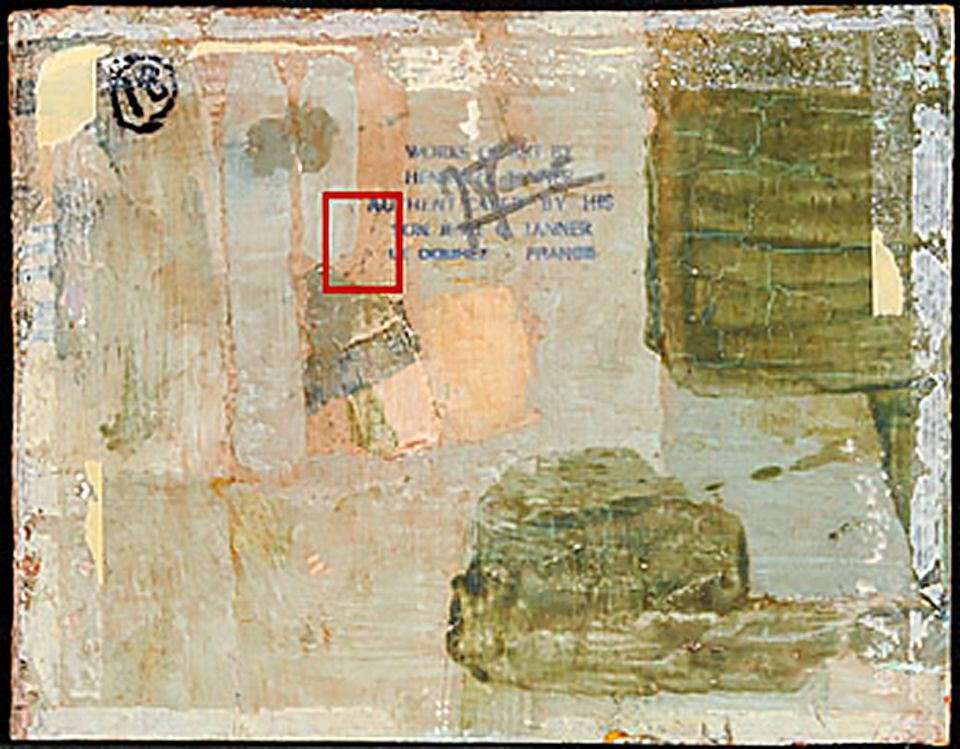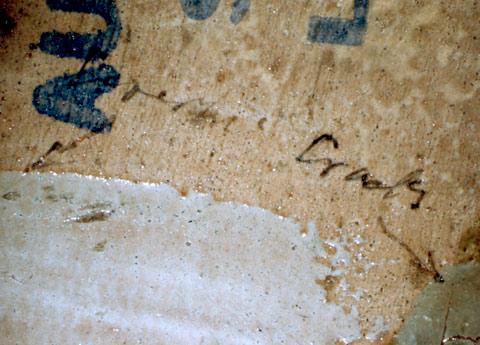
The back of Henry O. Tanner's Study for the Annunciation.
The Smithsonian American Art Museum has the largest collection of works by African American Henry O. Tanner in the United States. Several paintings are in the Lunder Conservation Center undergoing technical analysis in preparation for the 2012 exhibition Henry O. Tanner: An International Retrospective at the Pennsylvania Academy of the Fine Arts. Since Tanner was known for experimenting with materials, Smithsonian conservators are collaborating with PAFA researchers to understand the evolution of his methods. The findings from the study will be published later in the exhibition catalogue.
This image shows the back of Study for the Annunciation, which Tanner painted around 1898. The detail highlights scribbled notes believed to be Tanner's. The first word is difficult to read, but the second is "cracks" and points to a crack pattern in the top glazing layer on the square of test paint. These types of paintouts have never been documented on Tanner's works, and this is an important discovery for use in our analysis. It appears that he was experimenting with various glazes and formulas to achieve different effects in the paint layers. This notation may support the theory that Tanner manipulated his materials to achieve or prevent certain visual effects on his surfaces.
Mary Tait and Amber Kerr-Allison contributed to this post.





















